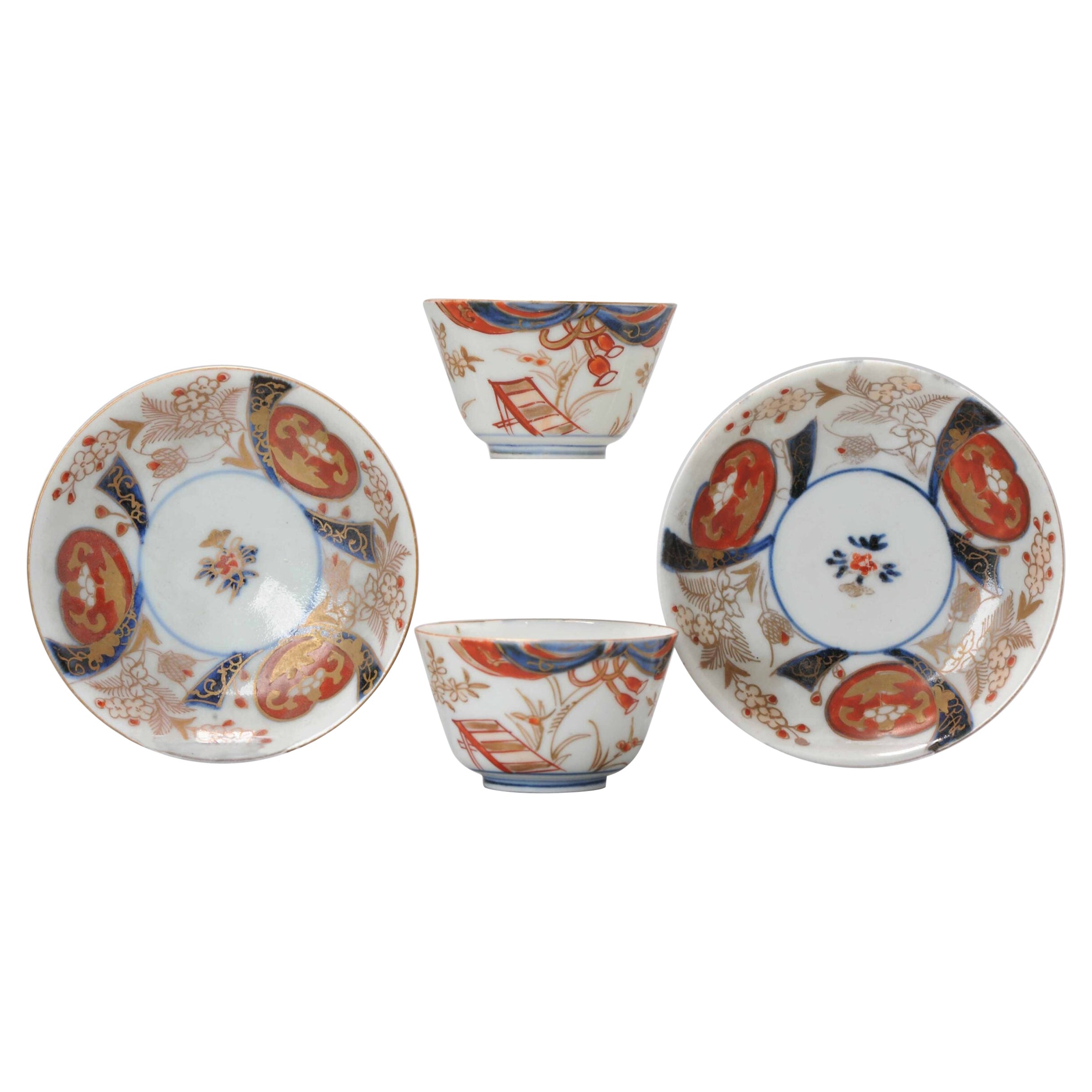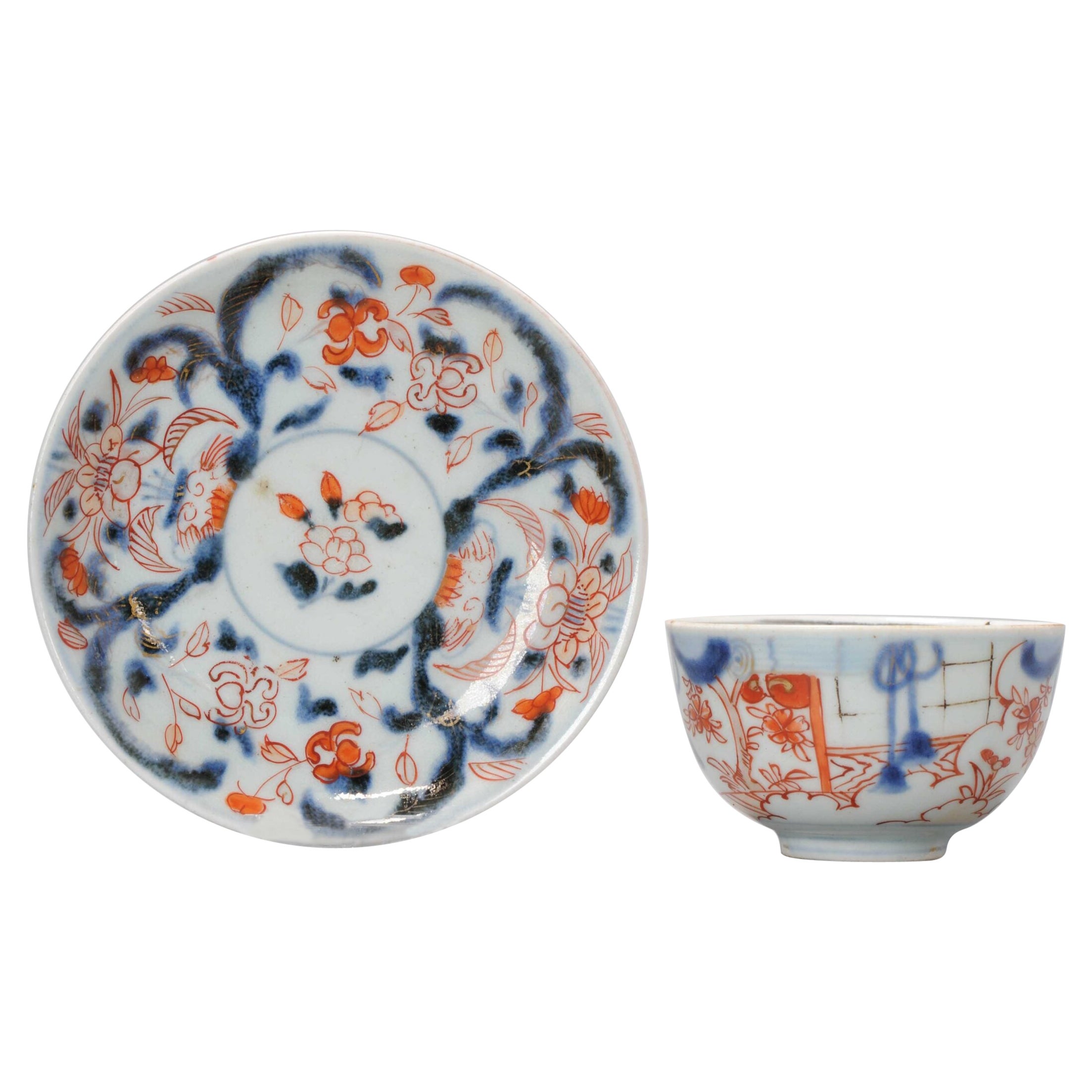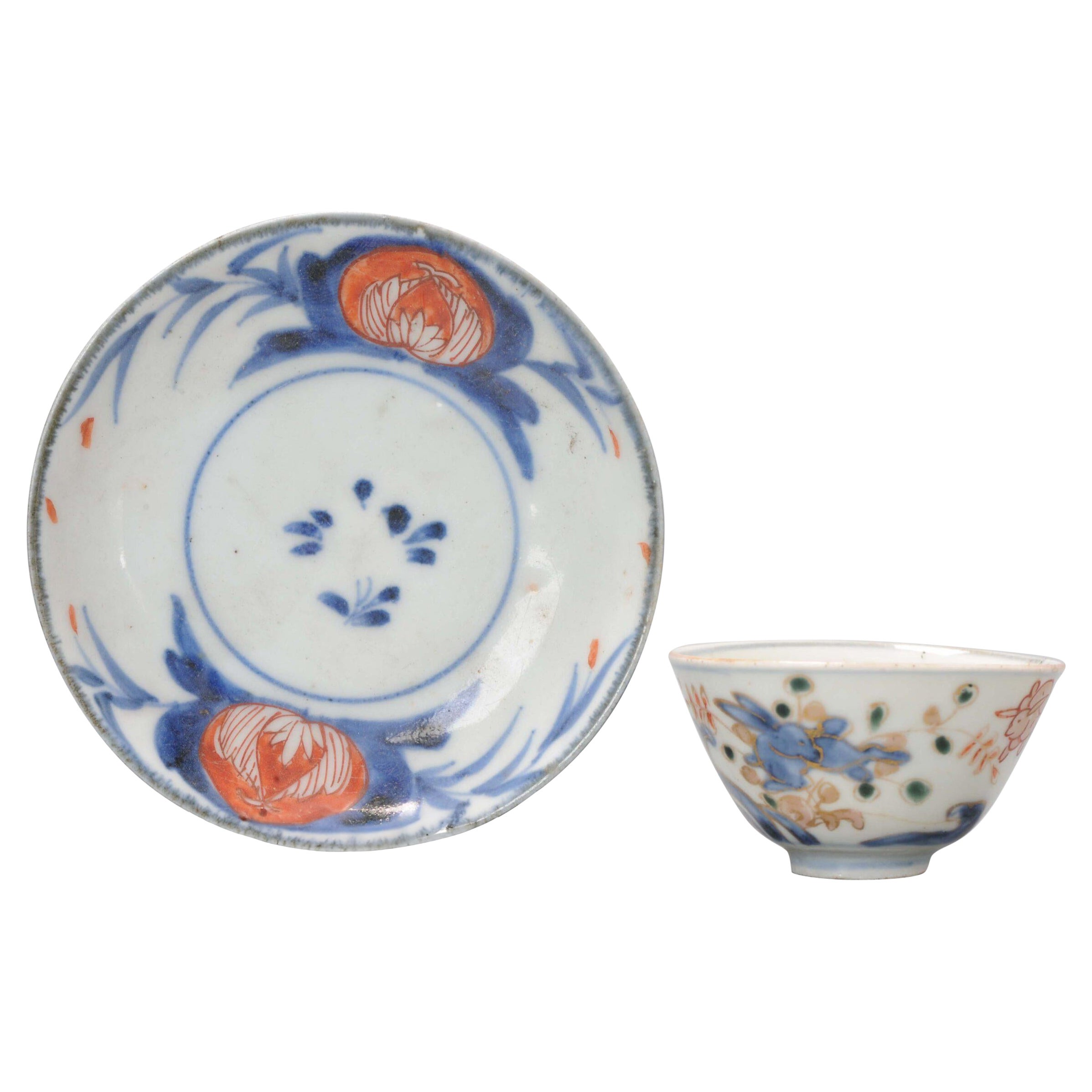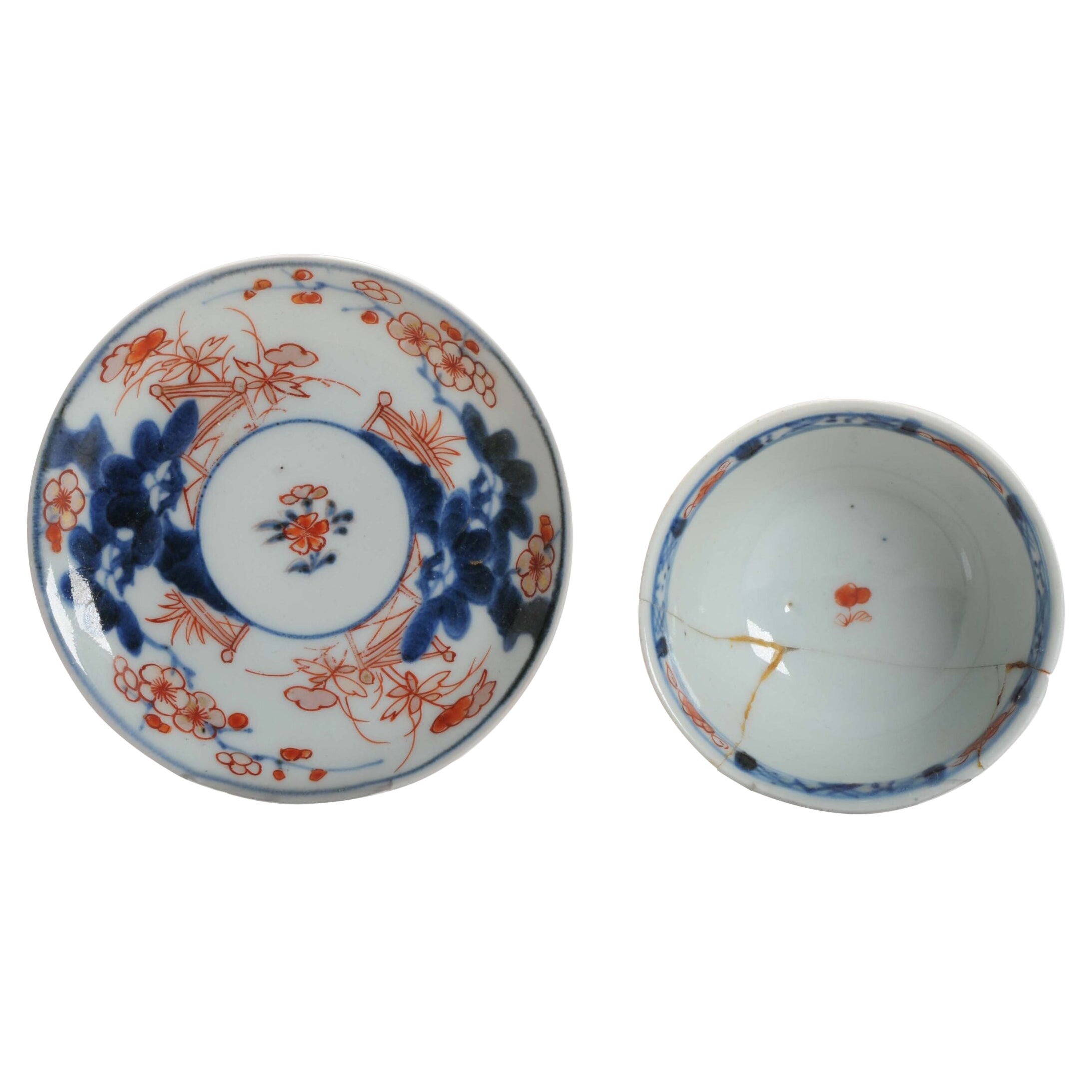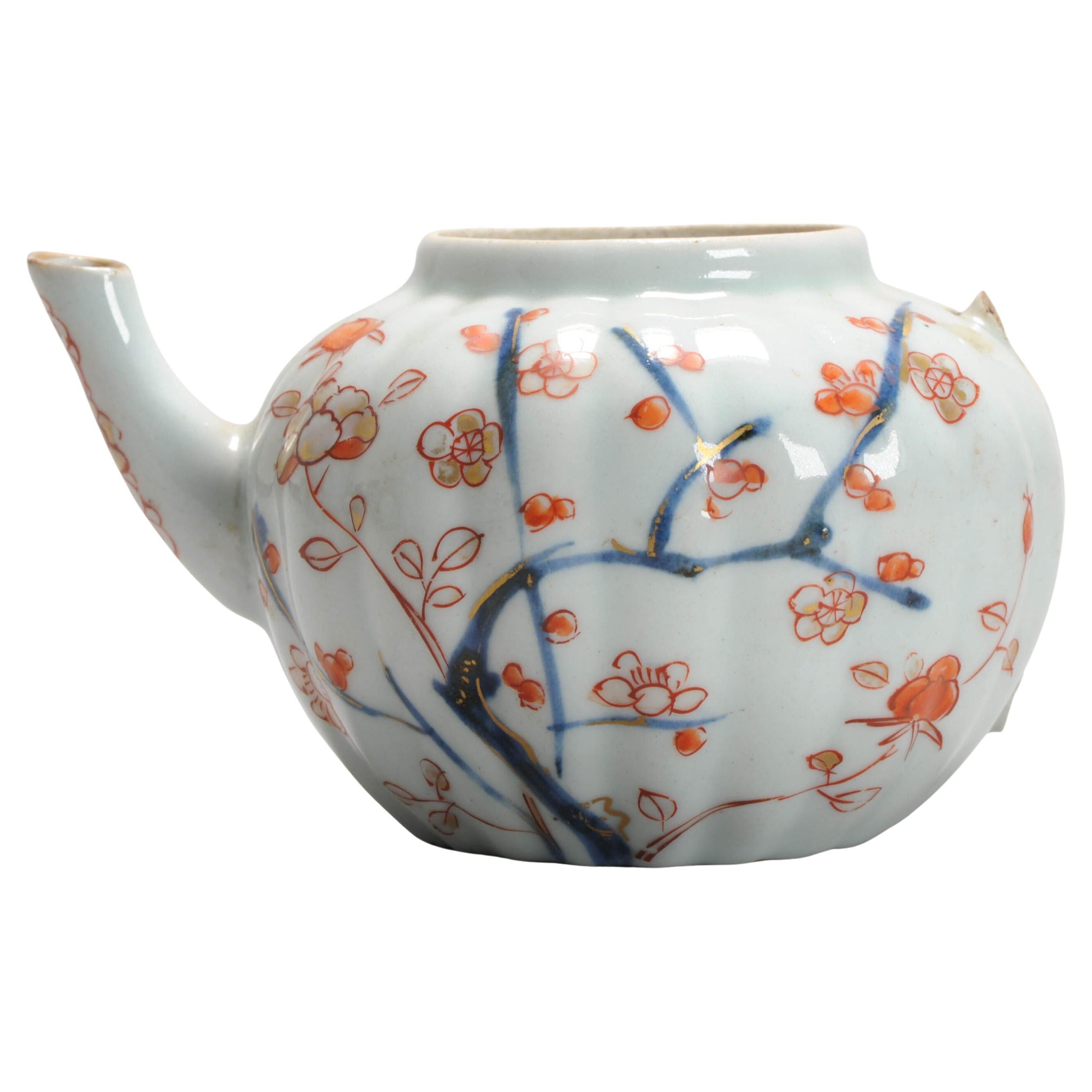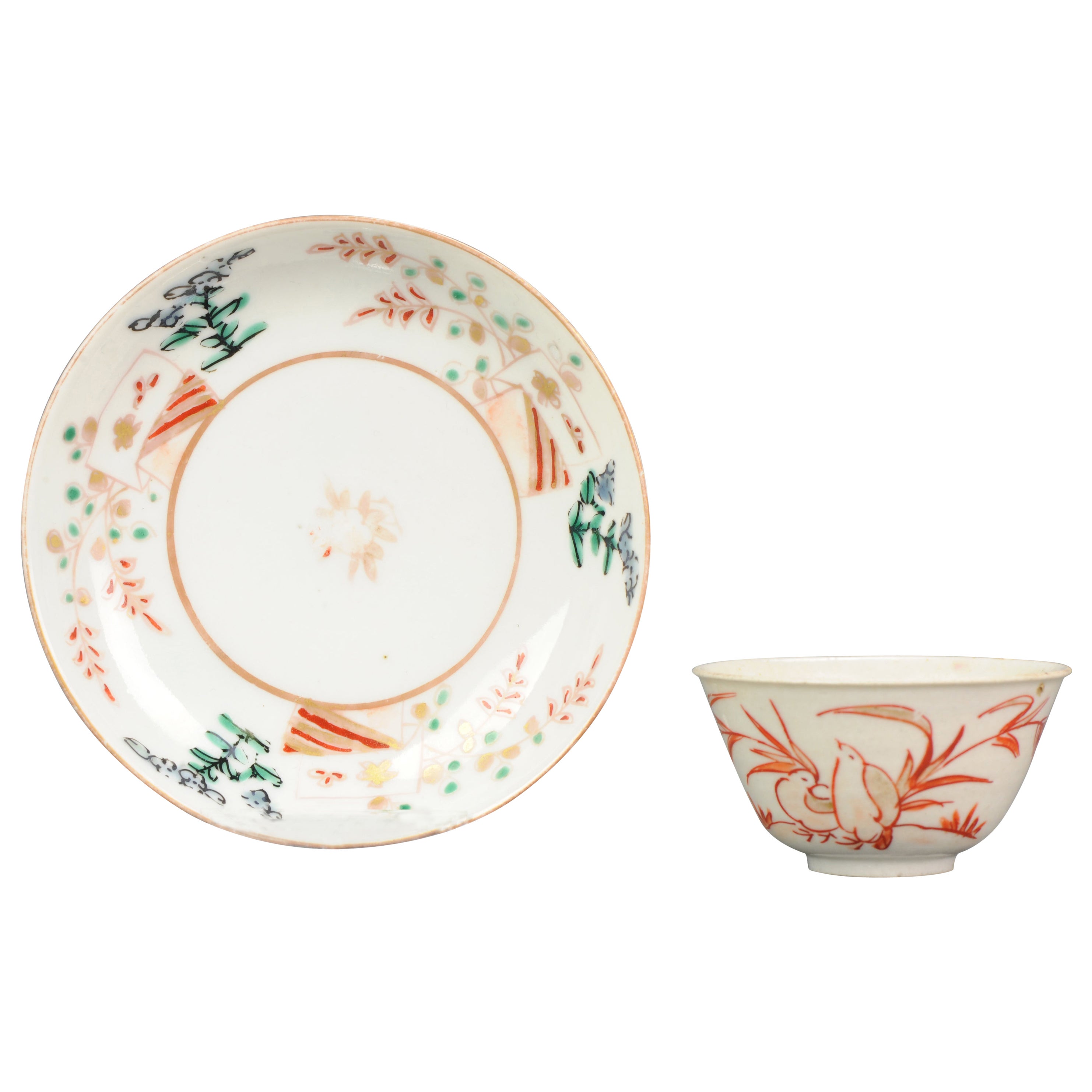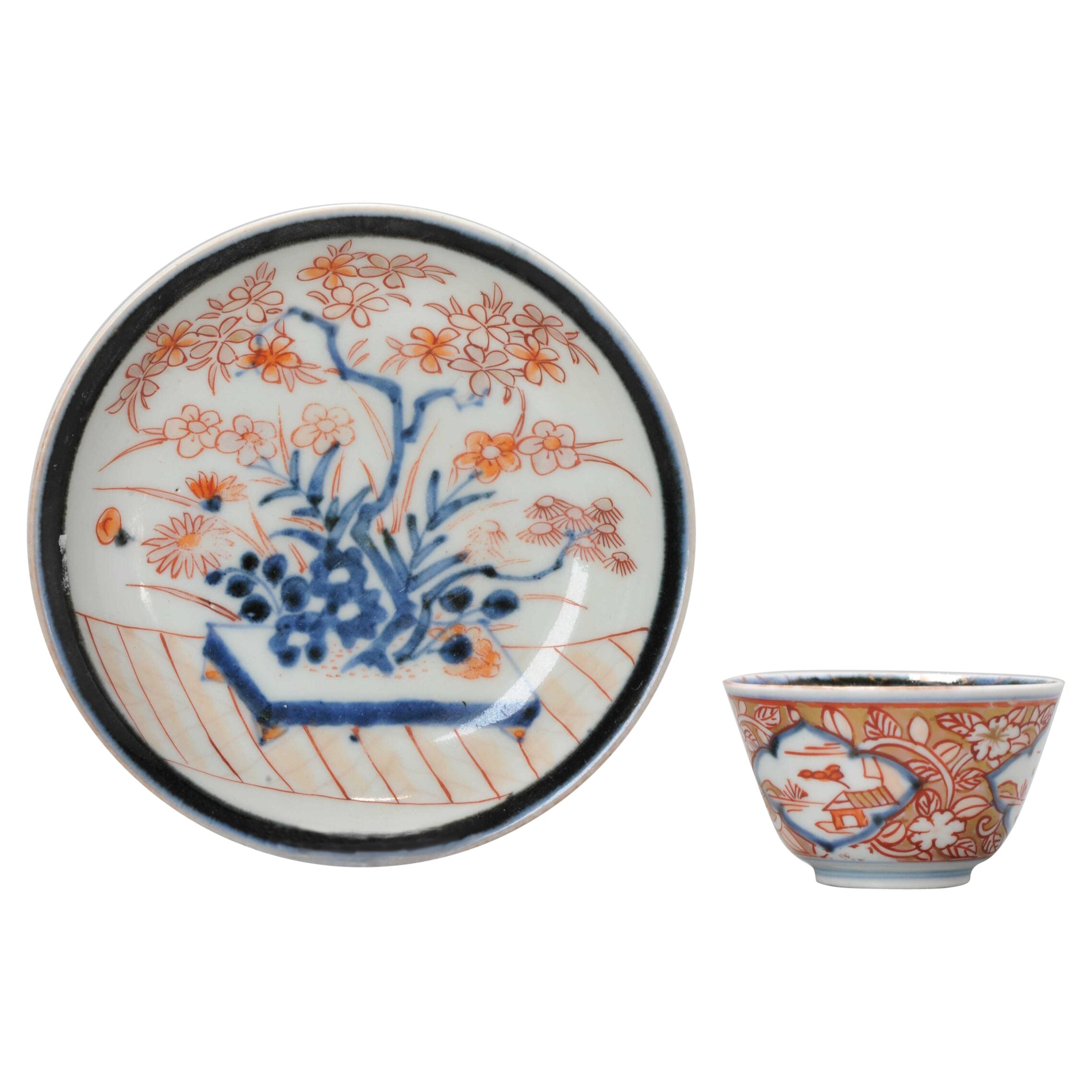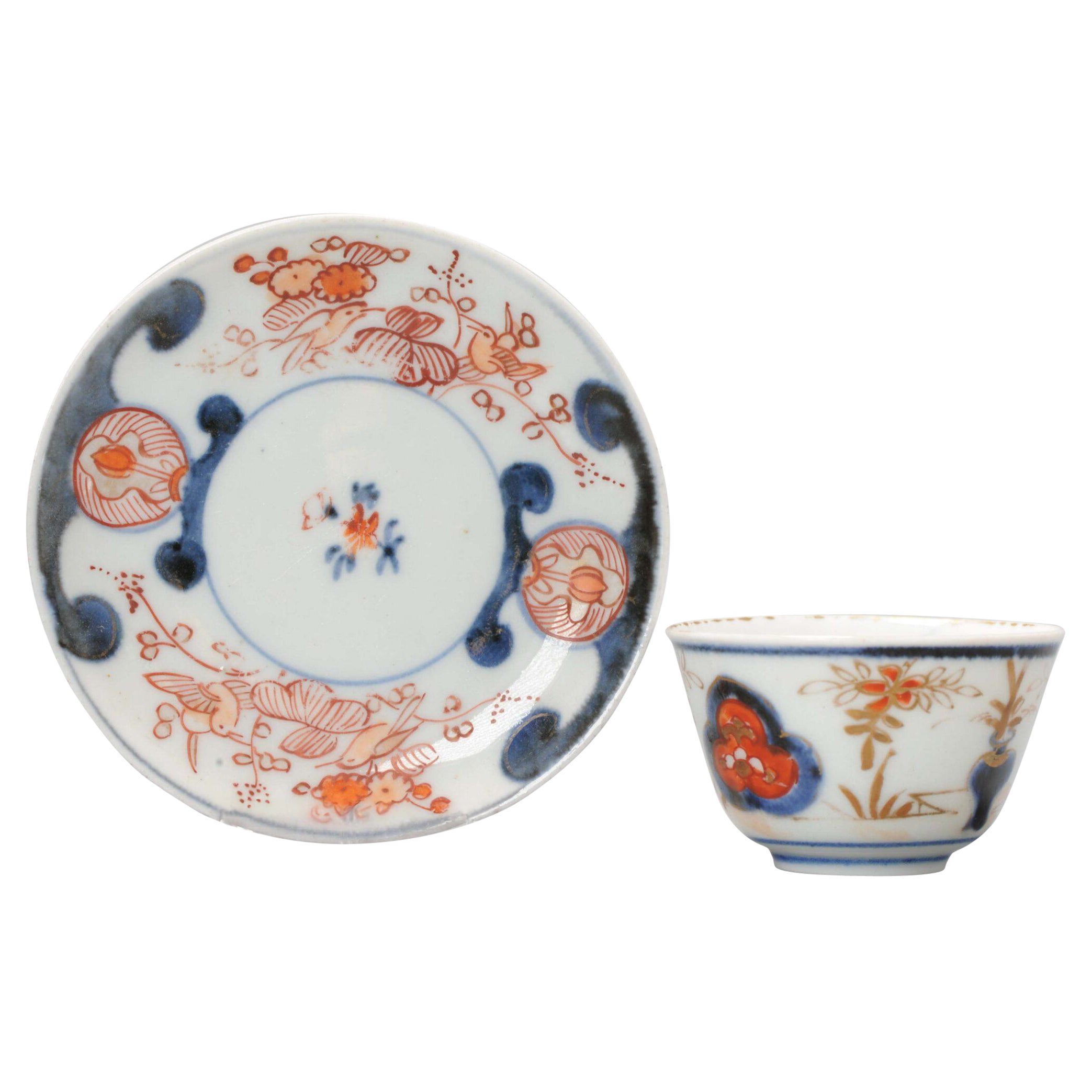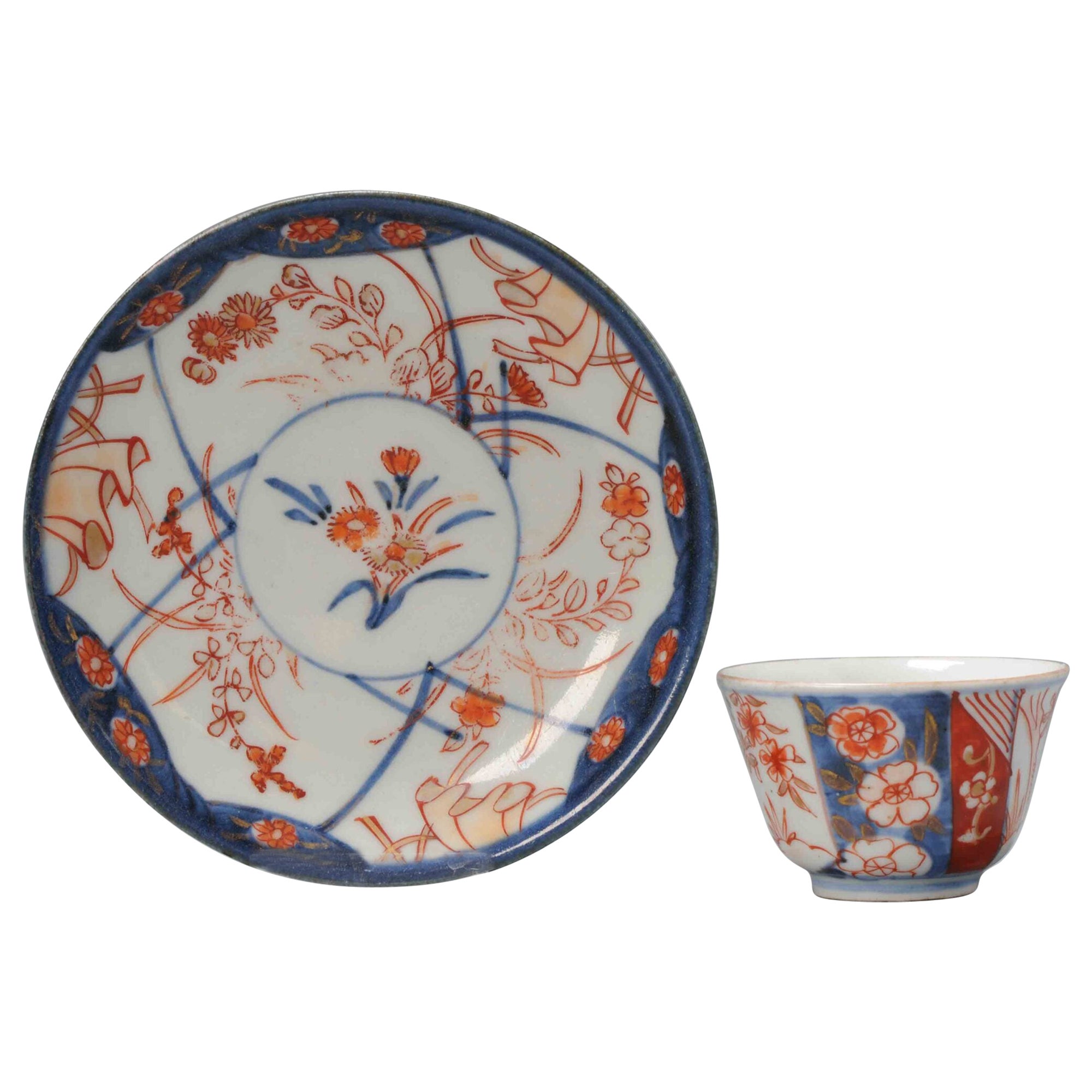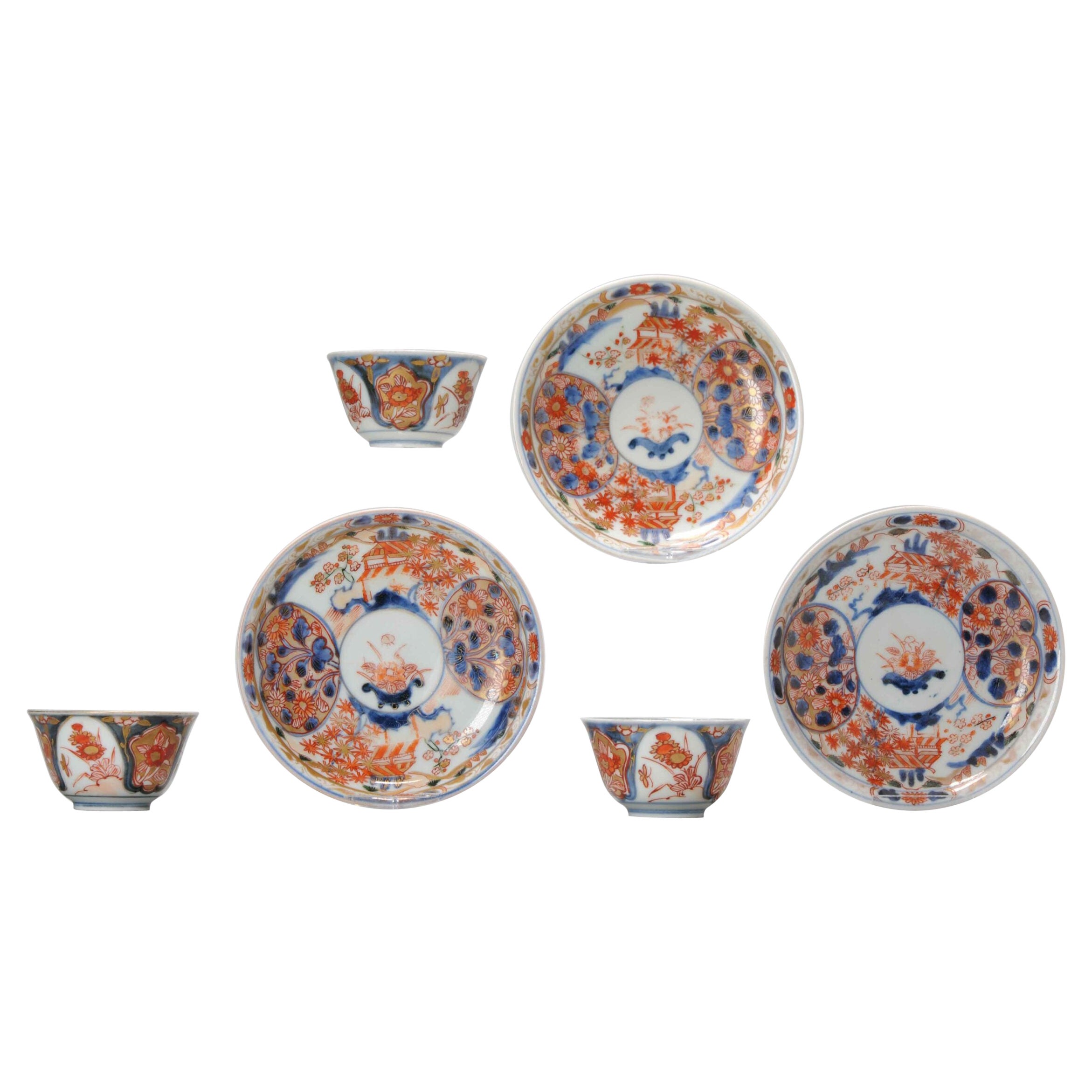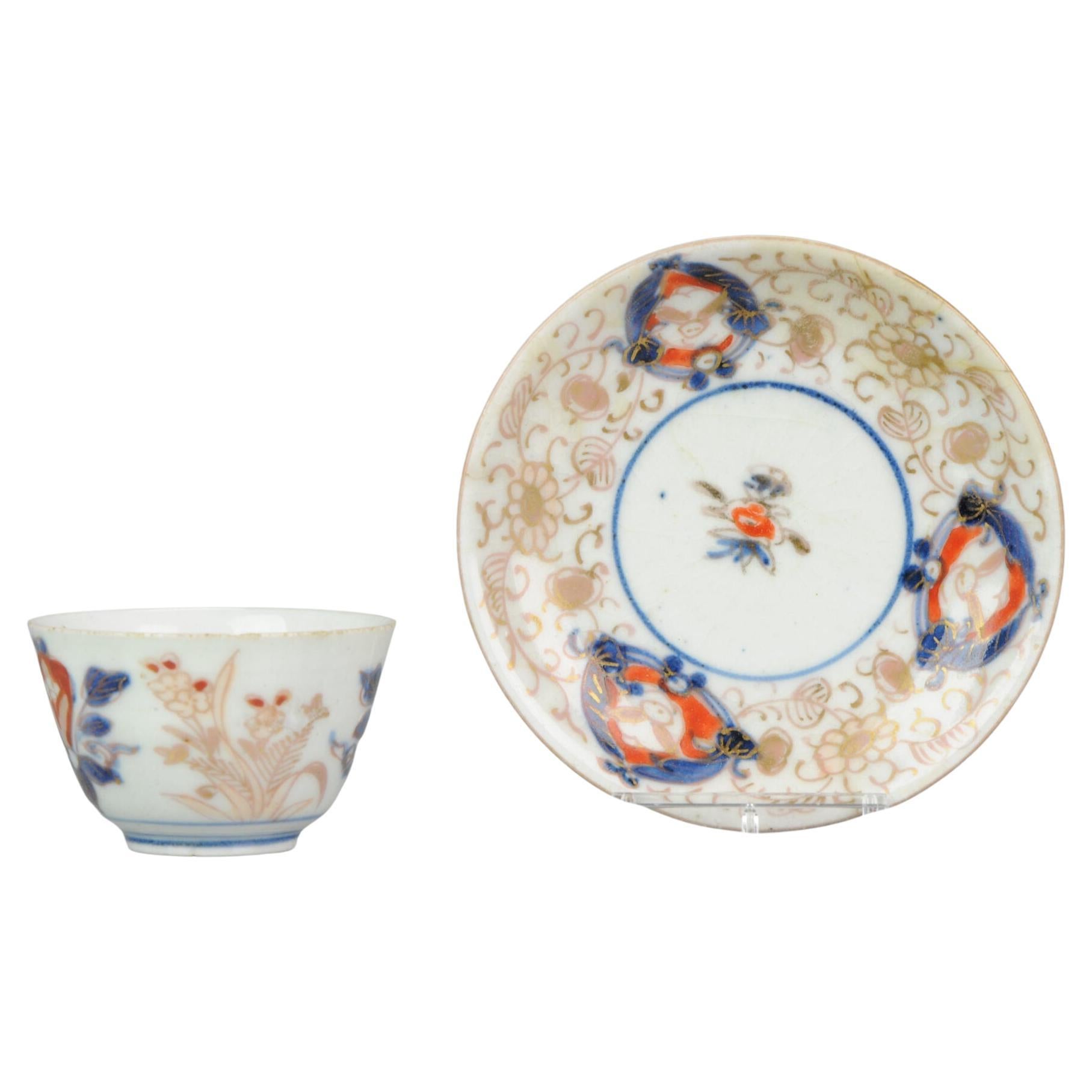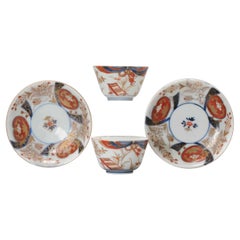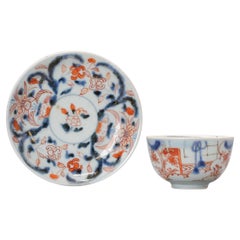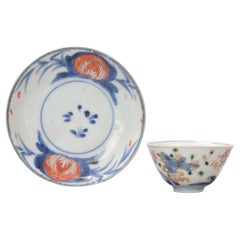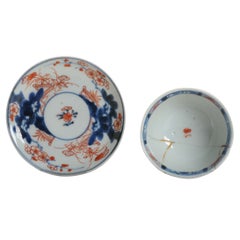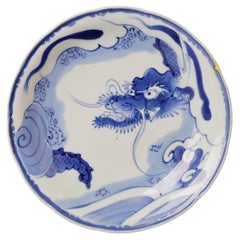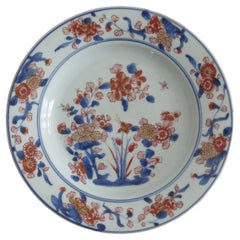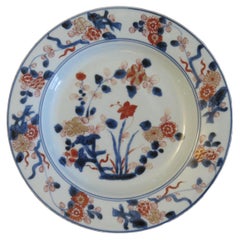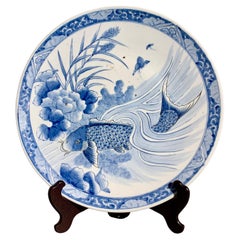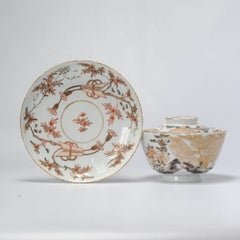
Gold Imari Arita Japanese Birds Edo Period Porcelain Bowl and Plate Ca 1700-1720
View Similar Items
Want more images or videos?
Request additional images or videos from the seller
1 of 5
Gold Imari Arita Japanese Birds Edo Period Porcelain Bowl and Plate Ca 1700-1720
About the Item
- Dimensions:Height: 3.55 in (9 cm)Diameter: 6.15 in (15.6 cm)
- Sold As:Set of 2
- Style:Edo (Of the Period)
- Materials and Techniques:
- Place of Origin:
- Period:
- Date of Manufacture:18th Century
- Condition:Dish 2 chips, very minimal frits and 2 or 3 small lines from rim, bowl with line and lid perfect.
- Seller Location:Amsterdam, NL
- Reference Number:Seller: 1449344980711stDibs: LU4863236186822
About the Seller
5.0
Platinum Seller
Premium sellers with a 4.7+ rating and 24-hour response times
Established in 2015
1stDibs seller since 2019
250 sales on 1stDibs
Typical response time: 2 hours
Authenticity Guarantee
In the unlikely event there’s an issue with an item’s authenticity, contact us within 1 year for a full refund. DetailsMoney-Back Guarantee
If your item is not as described, is damaged in transit, or does not arrive, contact us within 7 days for a full refund. Details24-Hour Cancellation
You have a 24-hour grace period in which to reconsider your purchase, with no questions asked.Vetted Professional Sellers
Our world-class sellers must adhere to strict standards for service and quality, maintaining the integrity of our listings.Price-Match Guarantee
If you find that a seller listed the same item for a lower price elsewhere, we’ll match it.Trusted Global Delivery
Our best-in-class carrier network provides specialized shipping options worldwide, including custom delivery.More From This Seller
View AllSet of Antique Japanese Porcelain Edo Period Tea Bowl Floral Bird Imari, c.1700
Located in Amsterdam, Noord Holland
Porcelain decorated in underglaze cobalt blue and overglaze red. Its a marriage, combination between 2 sets
Edo , c. 1700
Tea Bowl and dish
Additional information:
Material: Porcela...
Category
Antique 17th Century Japanese Edo Tea Sets
Materials
Porcelain
Set of Antique Japanese Porcelain Edo Period Tea Bowl Floral Bird Imari, c. 1700
Located in Amsterdam, Noord Holland
Porcelain decorated in underglaze cobalt blue and overglaze red. Its a marriage, combination between 2 sets
Edo , c. 1700
Tea Bowl and dish
Additional information:
Material: Porcela...
Category
Antique 17th Century Japanese Edo Tea Sets
Materials
Porcelain
Antique Japanese Porcelain Edo Period Tea Bowl Floral Hare Imari, c. 1700
Located in Amsterdam, Noord Holland
Porcelain decorated in underglaze cobalt blue and overglaze red. Its a marriage, combination between 2 sets.
Edo , c. 1700
Tea Bowl and dish
Additional information:
Material: Porcel...
Category
Antique 17th Century Japanese Edo Tea Sets
Materials
Porcelain
Antique Japanese Porcelain Edo Period Tea Bowl Floral Bird Imari
Located in Amsterdam, Noord Holland
Porcelain decorated in underglaze cobalt blue and overglaze red. Its a marriage, combination between 2 sets.
Edo , c. 1700
Tea Bowl and dish.
Additional information:
Material: Porc...
Category
Antique 17th Century Japanese Edo Tea Sets
Materials
Porcelain
Arita Edo Period Japanese Porcelain Kakiemon Fluted Tea Bowl, 1680-1720
Located in Amsterdam, Noord Holland
Very nice edo period example in nice condition, ca 1680-1732.
A Japanese Kakiemon tea bowl and footed dish in the shape of a flower.
Additional information:
Material: Porcelain & Po...
Category
Antique 17th Century Japanese Tea Sets
Materials
Porcelain
$1,114 Sale Price / set
20% Off
Antique Edo Period Japanese Porcelain Teapot Imari Red Gold, 1690-1720
Located in Amsterdam, Noord Holland
Nicely shaped teapot in round and moulded shape. With flower scene.
Additional information:
Material: Porcelain & Pottery
Region of Origin: Japan
Japanese Style: Imari
Decoration Ty...
Category
Antique 18th Century Japanese Edo Tea Sets
Materials
Porcelain
You May Also Like
Edo Period Imari Porcelain Plate with Japanese Dragon
Located in Fukuoka, JP
Superb Early Imari Porcelain Plate with Dragon Motif
Experience the timeless beauty of this superb Imari porcelain plate adorned with a captivating dragon motif. This exquisite pi...
Category
Antique 18th Century Japanese Edo Centerpieces
Materials
Porcelain
Chinese Imari Porcelain Plate or Bowl Qing Kangxi Mark and period, Ca 1700
Located in Lincoln, Lincolnshire
This is a beautifully hand painted Chinese Export porcelain plate or bowl from the Qing, Kangxi period, 1662-1722, fully marked to the base with the Kangxi period Artemisia Leaf mark within a double blue ring.
The plate is of dinner plate size, finely potted with a carefully cut base rim and a lovely rich glassy, white glaze with a light blue tinge.
The plate is carefully hand painted in a free flowing style, characteristic of the period, in varying shades of a clear cobalt blue, iron red and gold. The central well is decorated in the Imari style with flowering peonies, asters and other flowers and grasses, with a small insect flying above the flowers, all within two sets of concentric blue circles. The outer rim is richly decorated with flower sprigs and leaves, all within an outer blue circle.
The base of the plate has a recognized and documented hand painted Kangxi symbol of an Artemisia Leaf, within a double blue ring. See Page 168 of "How to Identify Old Chinese Porcelain" by Willoughby Hodgson and published by Forgotten Books. A Kangxi plate...
Category
Antique Early 18th Century Chinese Chinese Export Ceramics
Materials
Porcelain
Chinese Imari Porcelain Plate or Bowl Qing Kangxi Mark & period, Ca 1700
Located in Lincoln, Lincolnshire
This is a beautifully hand painted Chinese Export porcelain Plate or Bowl from the Qing, Kangxi period, 1662-1722, fully marked to the base with the Kang...
Category
Antique Early 18th Century Chinese Chinese Export Ceramics
Materials
Porcelain
Large Japanese Blue and White Arita Porcelain Charger, Edo Period, 19th C, Japan
Located in Austin, TX
A large Japanese blue and white decorated Arita porcelain charger, Edo Period, early 19th century, Japan.
The large and shallow blue and white Arita porcelain charger measures 18 ...
Category
Antique Early 19th Century Japanese Edo Ceramics
Materials
Porcelain
Japanese Antique Earthenware Tea Bowl/Edo Period/1700-1800/'Hagi Ware'
Located in Sammu-shi, Chiba
This is Hagi ware made in the middle of the Edo period.
Hagi ware is a type of pottery that began in Hagi City, Yamaguchi Prefecture in the early Edo period...
Category
Antique 18th Century Japanese Edo Pottery
Materials
Pottery
Spode Porcelain Teacup Trio, Red Imari Dollar Pattern, Regency, ca 1810
By Spode
Located in London, GB
This is a beautiful orphaned teacup made by Spode in about 1810. It bears a lavish Japanese-inspired Imari pattern.
Spode was the great pioneer among the Georgian potters in England. Around the year 1800 he perfected the bone china recipe that has been used by British potters ever since, and he was also the leading potter behind the technique of transferware, making it possible for English potters to replace the Chinese export china, which had come to an end around that time, with their own designs. This was fundamental to a thriving industry that would last for about 150 years and provide half the world with their tableware. Spode porcelain is regarded as one of the highest quality porcelains around; for a soft-paste porcelain it is surprisingly hard and fine, and has a wonderful bright white colour.
The pattern on this can is called "Dollar" pattern, a very famous pattern that was used by English potters in the 18th and early 19th Century. It is obvious why it is called “dollar” - but its origin is less obvious! It is thought that this pattern was derived from a very old Chinese pattern depicting a tree with elaborate foliage that hides a Chinese character representing longevity or happiness. Traditionally, this went with a an image called “Taotie”, which was used on very ancient bronze vases...
Category
Antique Early 1800s English Regency Porcelain
Materials
Porcelain
